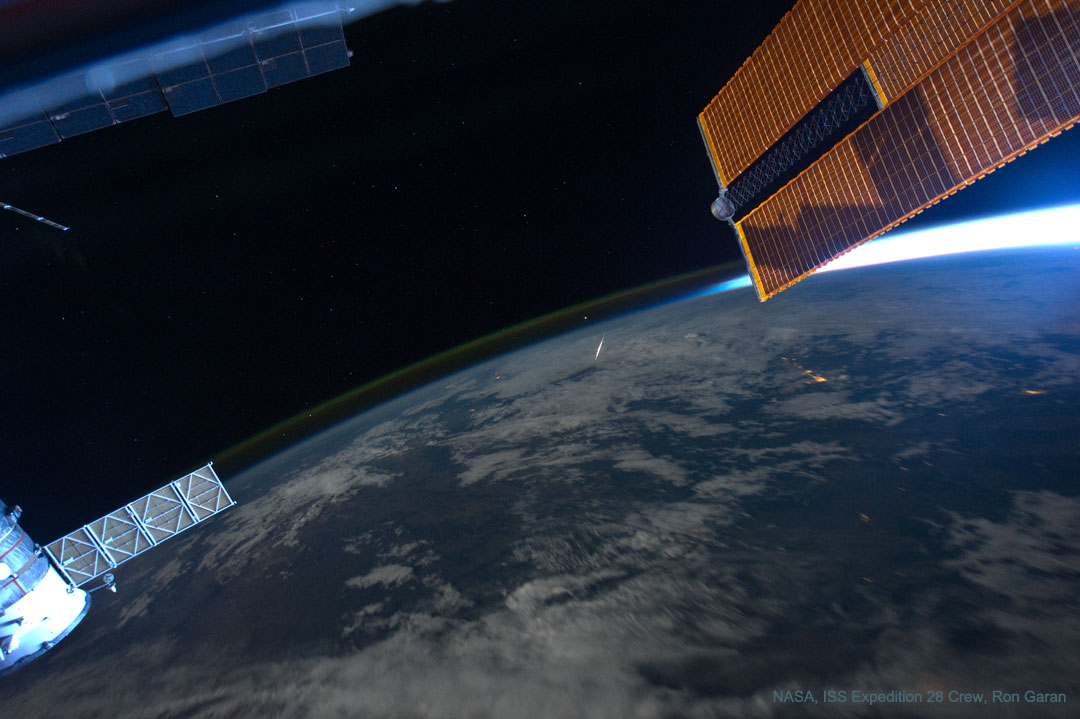下面的英仙座
(原标题: A Perseid Below)
2021-08-08
浏览次数: 139
地球人通常通过仰望来观看流星雨。但这张由宇航员Ron Garan在2011年8月13日拍摄的非凡的照片,是通过向下看捕捉到英仙座流星。Garan站在轨道高度380千米的国际空间站上,从他的角度来看,英仙座流星雨扫过了被加热到白炽的斯威夫特-塔特尔彗星留下的尘埃。发光的彗星尘埃颗粒以每秒60公里的速度穿过地球表面上方约100公里的高密度大气。在这种情况下,缩短的流星闪光在画面中心的右边,在地球弯曲的边缘和一层绿色气辉的下方,就在明亮的大角星的下方。想抬头看流星雨吗?你很幸运,因为2021年英仙座流星雨在本周达到顶峰。今年,即使是相对较暗的流星也应该在晴朗的天空中从黑暗的地方看到,因为明亮的月亮大部分都不会出现。提交给APOD的英仙座流星雨:2018,2019,2020
查看原文解释
rthlings typically watch meteor showers by looking up. But this remarkable view, captured on August 13, 2011 by astronaut Ron Garan, caught a Perseid meteor by looking down. From Garan's perspective onboard the International Space Station orbiting at an altitude of about 380 kilometers, the Perseid meteors streak below, swept up dust left from comet Swift-Tuttle heated to incandescence. The glowing comet dust grains are traveling at about 60 kilometers per second through the denser atmosphere around 100 kilometers above Earth's surface. In this case, the foreshortened meteor flash is right of frame center, below the curving limb of the Earth and a layer of greenish airglow, just below bright star Arcturus. Want to look up at a meteor shower? You're in luck, as the 2021 Perseids meteor shower peaks this week. This year, even relatively faint meteors should be visible through clear skies from a dark location as the bright Moon will mostly absent. Notable Perseids Submissions to APOD: 2018, 2019, 2020
